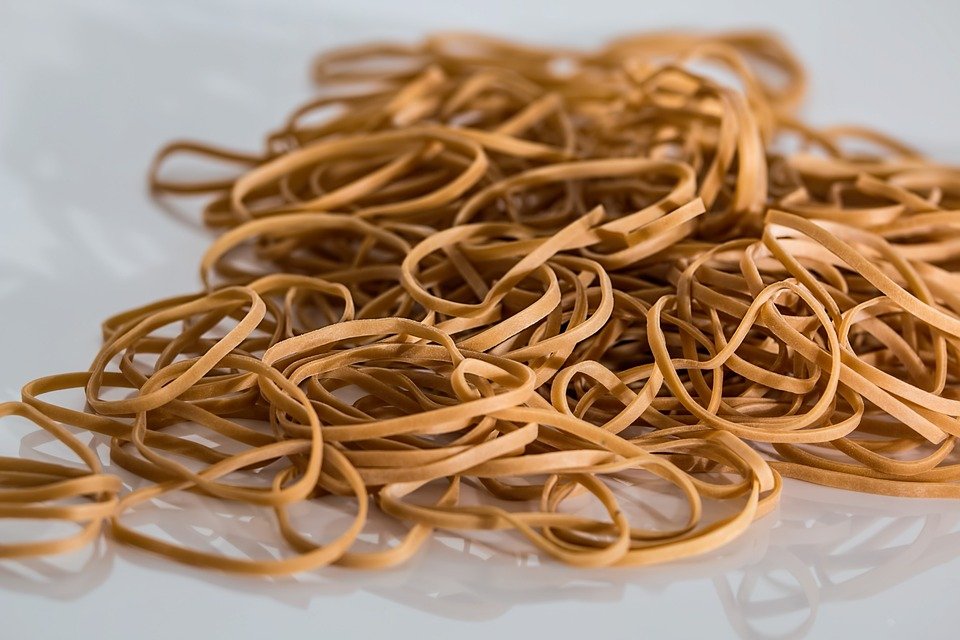TSCPFLCP is a polysiloxane grafted with thermotropic fluorinated mesogens, which when blended with LLDPE reduces melt torque, broadens the processing window, ameliorates melt fracture, and enhances mechanical properties. The TSCPFLCP exhibits a smectic liquid crystal phase and high thermal decomposition temperature. These improvements are achieved at a low concentration of 0.5 wt% TSCPFLCP, indicating its effectiveness as a processing aid for LLDPE. The researchers were able to use a Linkam THMS600E stage to investigate the temperature-dependent texture of the polymer.
Multi-scale thermal stability of a hard thermoplastic protein-based material
Macroscopic CNT fibres inducing non-epitaxial nucleation and orientation of semicrystalline polymers
Retardation of cold flow in immiscible rubber blends by tailoring their microstructures
Enhancement of Mechanical and Self‐Healing Performance in Multiwall Carbon Nanotube/Rubber Composites via Diels–Alder Bonding
Effect of the melting temperature on the crystallization behavior of a poly(l‐lactide)/poly(d‐lactide) equimolar mixture
An Image is Everything: A Tutorial on Choosing and Using the Components of a Dynamic Data Capture System
Linkam provide sample characterisation solutions across a range of temperature and environmental control methods which can be used in combination with microscopic and spectroscopic analysis techniques. Here, we share our expertise in temperature-controlled microscopy with a discussion of how to assemble a dynamic data capture and imaging system.
Access the full version here: https://doi.org/10.1017/S1551929520001558
Stacey, D., & Gurney, R. (2020). An Image is Everything: A Tutorial on Choosing and Using the Components of a Dynamic Data Capture System. Microscopy Today, 28(6), 44-49. doi:10.1017/S1551929520001558
Reversible Lamellar Thickening Induced by Crystal Transition in Poly(butylene succinate)
Researchers investigate the crystal phase transition during stretching of poly(butylene succinate) via in situ synchrotron X-ray scattering at a range of temperatures, using Linkam’s mechanical testing system.
Read the full article here (access required).
Flow-induced crystallisation of polymers from aqueous solution
Researchers used Linkam’s CSS450 to replicate the mechanical properties of natural silk by creating a synthetic polymer that solidifies when subject to flow. Using temperature-controlled shear in the aqueous phase they induce polymer crystallisation, providing an alternative low-energy polymer processing route.
Full Open Access article availble via CC BY 4.0
Dunderdale, Gary J., et al. "Flow-induced crystallisation of polymers from aqueous solution." Nature communications 11.1 (2020): 1-9.
Inorganic Nanotube Mesophases Enable Strong Self-Healing Fibers
Using Linkam’s mechanical testing stage, a team of researchers at Imperial College London added geo-inspired double-walled nanotubes to a polymer matrix in order to improve the tensile properties.
Full Open Access article availble via CC BY
Inorganic Nanotube Mesophases Enable Strong Self-Healing Fibers Won Jun Lee, Erwan Paineau, David Benbow Anthony, Yulin Gao, Hannah Siobhan Leese, Stéphan Rouzière, Pascale Launois, and Milo Sebastian Peter Shaffer* ACS Nano 2020, 14, 5, 5570–5580 Publication Date:April 7, 202
Reductive dissolution of supergrowth carbon nanotubes for tougher nanocomposites by reactive coagulation spinning
Researchers use the Linkam MFS to image and measure the tensile properties of nanocomposite samples synthesised by coagulation spinning using carbon nanotubes.
The microstructure and rheology of carbon nanotube suspensions
Linkam’s Optical Shear system CSS450 was used to observe the evolution of the microstructure of single walled carbon nanotube suspensions under shear.
Synchrotron X-ray scattering study on amorphous poly(ethylene furanoate) under uniaxial deformation
Stretching-Induced Uniform Micropores Formation: An in Situ SAXS/WAXS Study
By stretching lamellar polymer films at various temperatures, researchers were able to prepare microporous membranes. They performed SAXS/WAXS characterisation on the stretched samples, and for the first time clarifying the fibre connecting bridges that form when the composite is stretch at raised temperatures. Read how Linkam’s mechanical testing system was key to this research.










